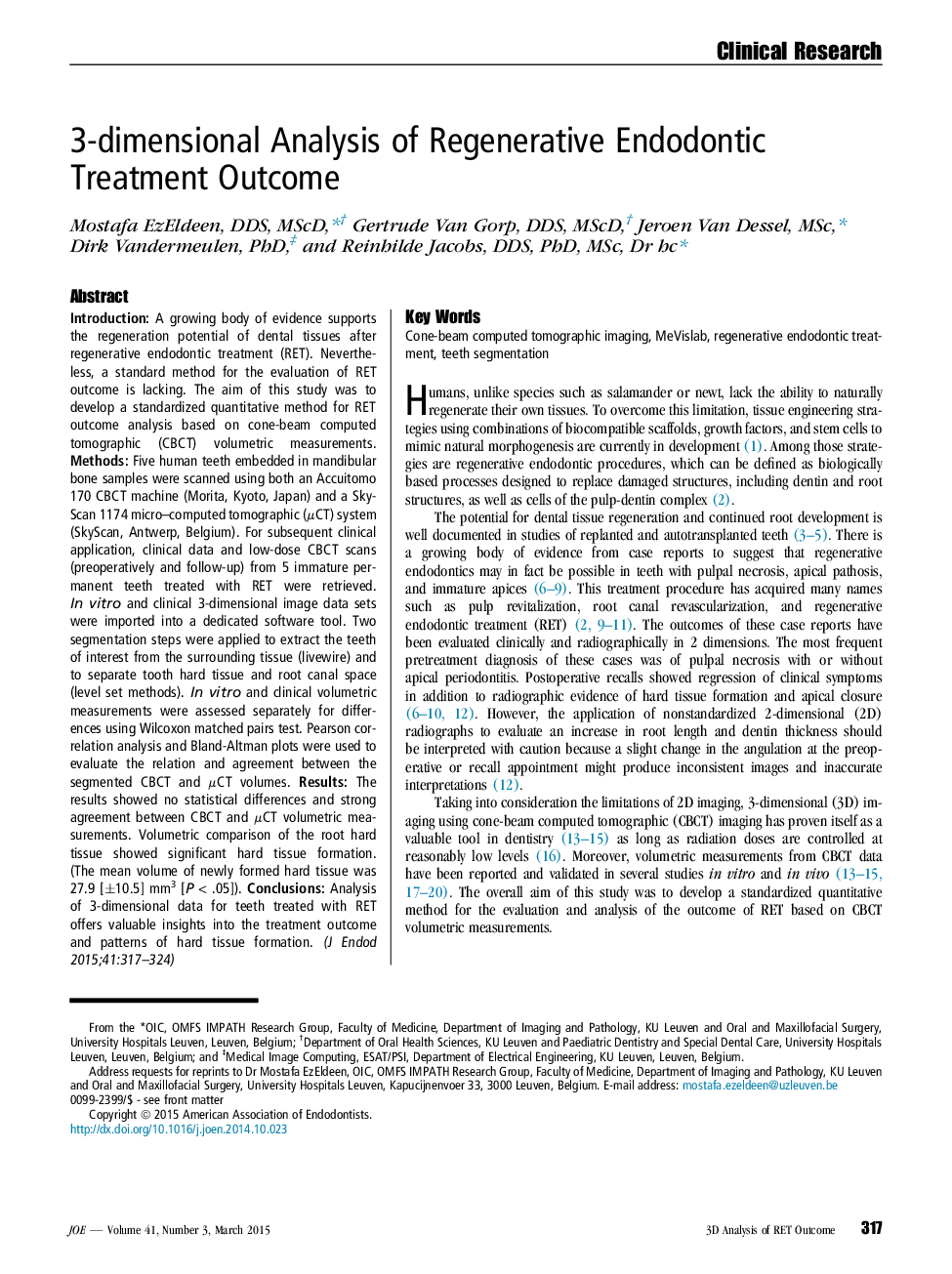| Article ID | Journal | Published Year | Pages | File Type |
|---|---|---|---|---|
| 3148305 | Journal of Endodontics | 2015 | 8 Pages |
IntroductionA growing body of evidence supports the regeneration potential of dental tissues after regenerative endodontic treatment (RET). Nevertheless, a standard method for the evaluation of RET outcome is lacking. The aim of this study was to develop a standardized quantitative method for RET outcome analysis based on cone-beam computed tomographic (CBCT) volumetric measurements.MethodsFive human teeth embedded in mandibular bone samples were scanned using both an Accuitomo 170 CBCT machine (Morita, Kyoto, Japan) and a SkyScan 1174 micro–computed tomographic (μCT) system (SkyScan, Antwerp, Belgium). For subsequent clinical application, clinical data and low-dose CBCT scans (preoperatively and follow-up) from 5 immature permanent teeth treated with RET were retrieved. In vitro and clinical 3-dimensional image data sets were imported into a dedicated software tool. Two segmentation steps were applied to extract the teeth of interest from the surrounding tissue (livewire) and to separate tooth hard tissue and root canal space (level set methods). In vitro and clinical volumetric measurements were assessed separately for differences using Wilcoxon matched pairs test. Pearson correlation analysis and Bland-Altman plots were used to evaluate the relation and agreement between the segmented CBCT and μCT volumes.ResultsThe results showed no statistical differences and strong agreement between CBCT and μCT volumetric measurements. Volumetric comparison of the root hard tissue showed significant hard tissue formation. (The mean volume of newly formed hard tissue was 27.9 [±10.5] mm3 [P < .05]).ConclusionsAnalysis of 3-dimensional data for teeth treated with RET offers valuable insights into the treatment outcome and patterns of hard tissue formation.
